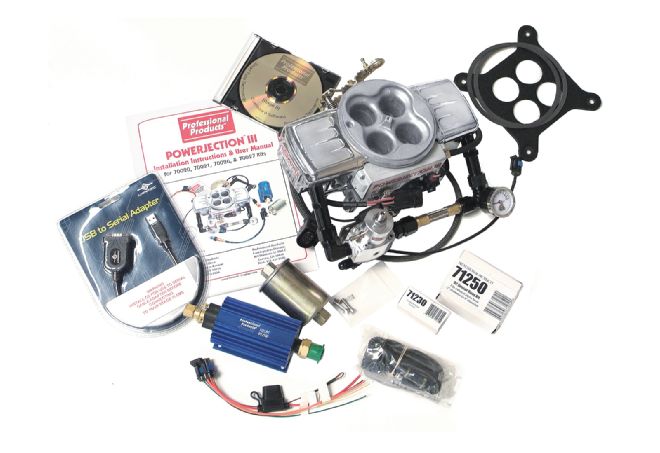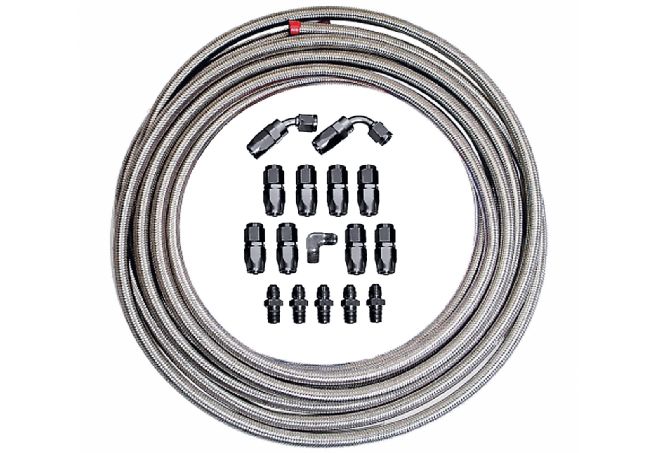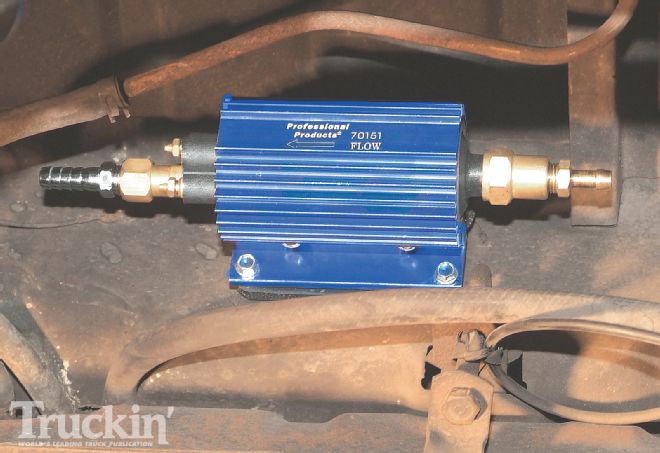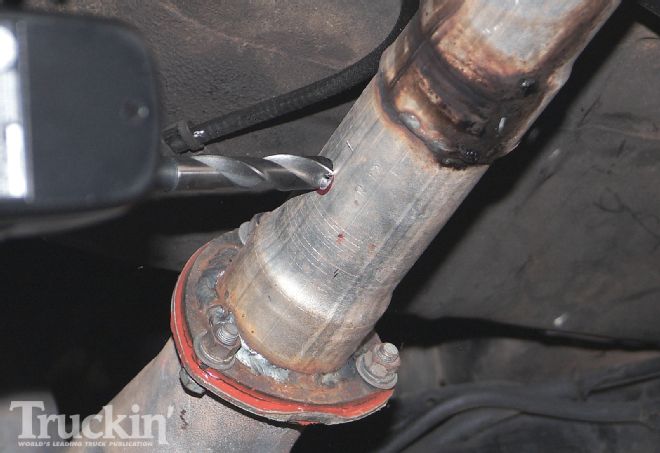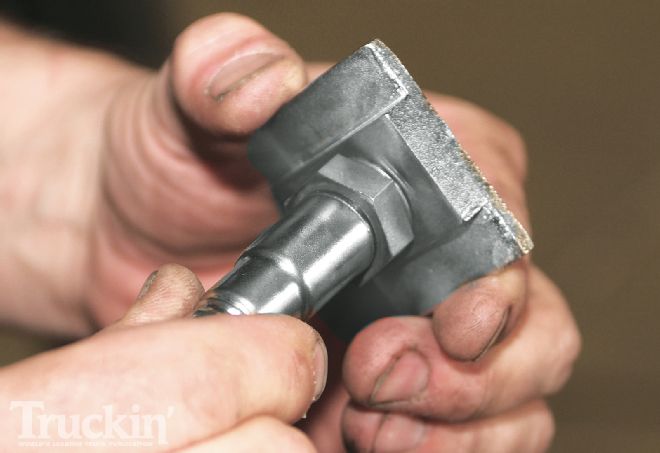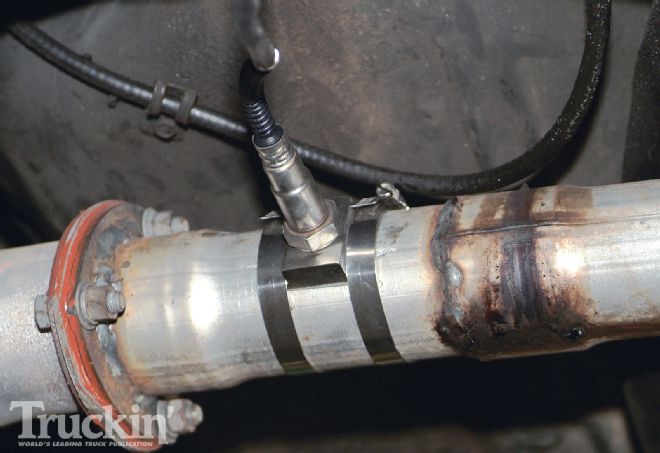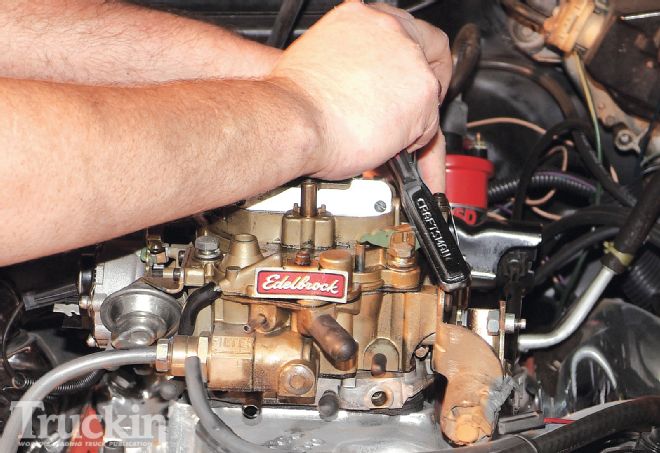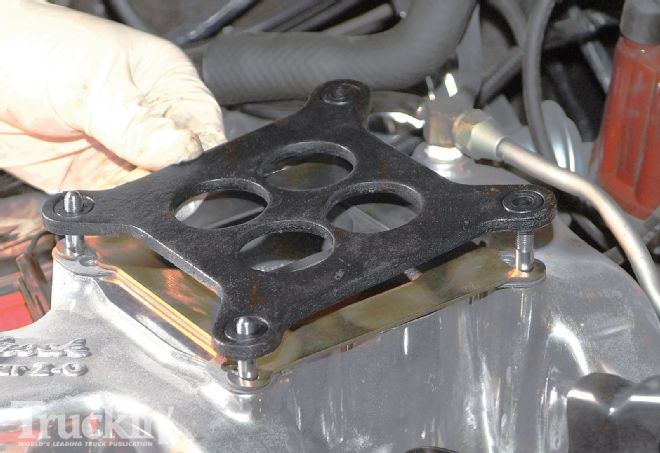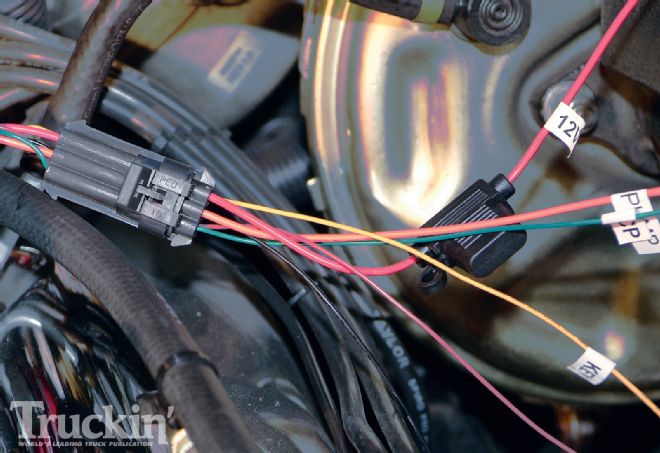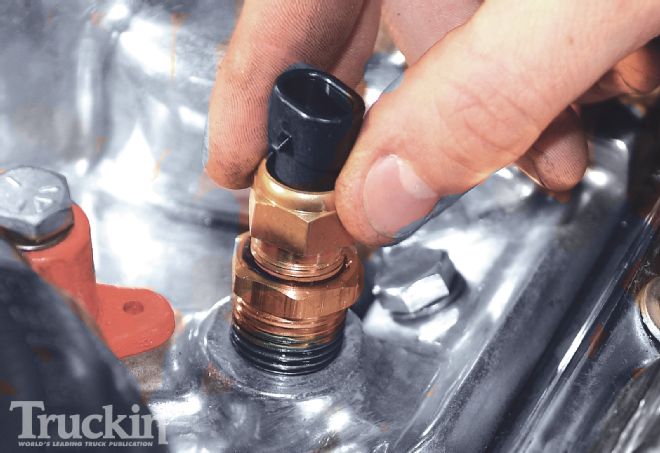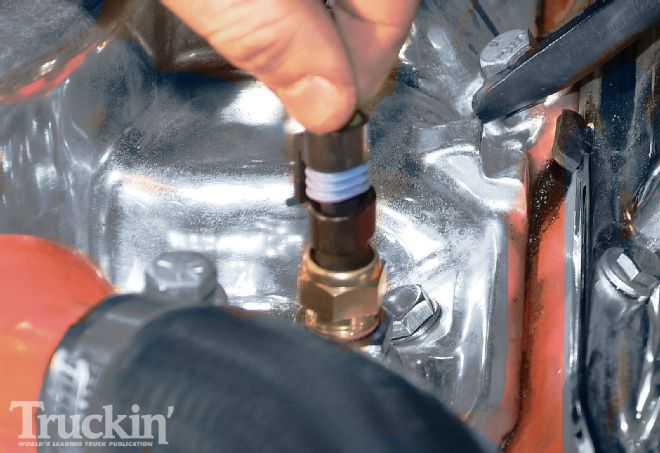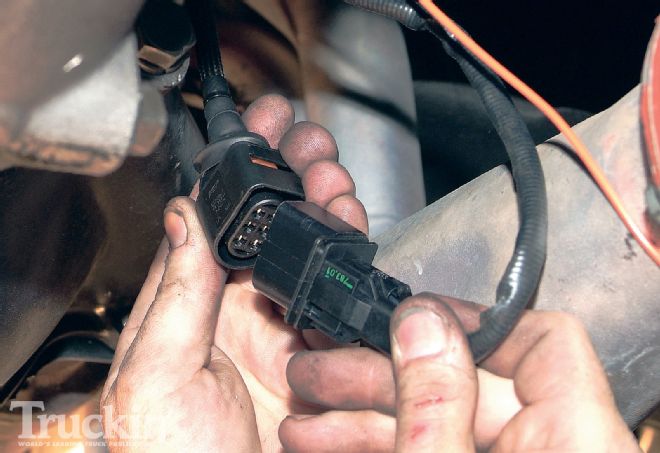Aftermarket fuel injection systems have been on the shelves for a number of years, but early systems had a variety of bugs and technical problems that turned do-it-yourselfers off to the idea of buying and installing an aftermarket EFI setup. In recent years, several of these systems have been vastly improved, with the majority of the problems eliminated. But the high cost of most systems, coupled with the need for expert laptop tuning, has kept these electronic fuel delivery systems from being at the top of most performance enthusiasts' list of parts to buy. The time and the complexity required to install a complete system was another high hurdle to overcome.

| professional Products Powerjection Lll EFI System installation
Now Professional Products has the Powerjection III EFI System that was specifically designed and engineered to overcome the annoying problems found in most aftermarket EFI units. This time, the unit and its brain are simple to install and self-learning. First, Professional Products addressed the cost. The typical over-the-counter retail cost of a Powerjection III system can be as little as $1,545 complete. The only possible option would be a P3 Fuel Delivery & Return Kit for about $242. This kit includes enough -06AN stainless braided hose, hose ends, and fittings to plumb both an inlet fuel line and a return line for cars over 500 hp.
Since one of the most expensive components in a system is the injectors, going from eight to four injectors substantially reduced the cost. The engineers miniaturized the computer and then cleverly mounted it directly on the throttle-body. This eliminated 90-percent of the wiring and connections involved, which further reduced costs. These cost reduction measures also contributed to the ease of installation. Mounting the EMS on the throttle-body eliminated the need to mount it under the dash and route the harness through the firewall to the engine. The MAP sensor is also integrated with the EMS, eliminating the need for a manifold swap. And depending on certain factors, such as the vehicle that the unit is being installed on, a complete install can be done in as little as three or four hours. An experienced mechanic can do it in two with no welding required.
Our experience confirmed just how easy an installation can be, plus the kind of performance and/or economy gains that can be achieved. The vehicle we chose was a '70 Chevy El Camino SS 396 with cowl-induction. The vehicle had a spreadbore carburetor, which created a few additional challenges but nothing that wasn't easily handled. The El Camino had a few modifications such as a Street Performance aftermarket manifold, an Edelbrock 650-cfm carburetor, a Crower street cam with 276-degrees duration and .518-inch lift, plus headers.
The Powerjection III comes with "Self-Learning" software installed into the system that's suitable for the vast majority of vehicles. This means as you take your car out for a spin it will essentially self-tune itself for optimum performance. Only engines with radical modifications will need laptop tuning, and even in such a case, the Powerjection III is much easier than other systems. We connected a laptop to the EMS, loaded in the Dashboard Software and let the Wizard go to work. You can also go in and individually do any type of programming or mapping the same as you would with any other aftermarket EFI system. Take a look at how we easily updated and upgraded a big-block Chevy with new fuel-injection.
FROM THE DRIVER SEAT
Prior to the installation, we took the car to W.O.T. Performance Products in Riverside, California, to have it run on their chassis dyno. After the installation was complete, and enough driving was done to have the "Adaptive Learning" feature work its magic, we took it back for a follow up dyno test.
Here Are The Results:
Peak to peak torque was improved by 9 lb-ft as it went from 281 to 290 lb-ft. That may not sound like much, but peak numbers do not tell the whole story. Average torque from roughly 2,500 to 5,000 rpm improved by 14 lb-ft and at 4,200 it was a whopping 25 lb-ft better. Peak horsepower took a major leap from 211 at about 4,700 rpm, to 238 at about 4,900 rpm, a 27 hp gain. Average horsepower gain over the full pull was 16 horsepower. Best of all, while the power nosed over with the carburetor at 4,700, it was still going up at 5,000 with the Powerjection III. While the car was on the dyno after the EFI installation, we dropped the total timing from 38-degrees to 32-degrees. This made a slight improvement in peak power of one horsepower going to 239, but peak torque jumped an impressive 24 lb-ft to 314. The net result of this is that although peak power didn't change much, power was up significantly up throughout the rpm range.
Here Are Some Examples:
Before the timing change, at 3,000 rpm there was almost no difference before and after the EFI change. After the timing was reduced, horsepower increased by 16 horsepower at 3,000. At 3,800 the difference was about 5 horsepower and after the timing change the difference was about 18 horsepower. The owner of the El Camino reported that all around drivability and throttle response was dramatically improved. The car even started better than before and of course there will be no more choke issues on cold mornings. David said it is like driving a totally different car and the amount of improvement is way beyond his wildest expectations.
YOUR QUESTIONS ANSWERED
Degree Of Difficulty: Beginner
Time Spent Working: 4 Hourse
Tools Needed:
Standard sockets, ratchet, drill and bits, flat screwdriverpipe sealant
Parts Used:
Professional Products Powerjection III Fuel-Injection Kit
$1,545.95
Professional Products Fuel Delivery & Return Kit
$242.00
Total: $1,787.95 (prices from summit racing)
